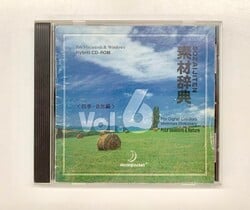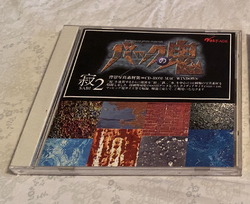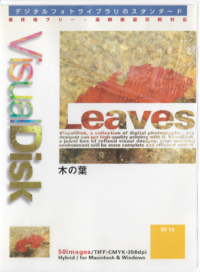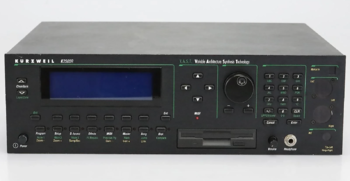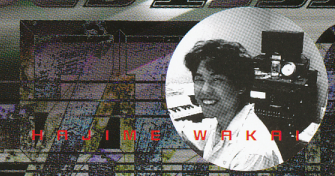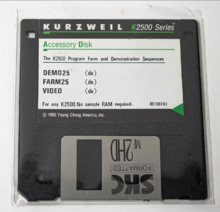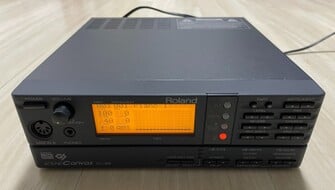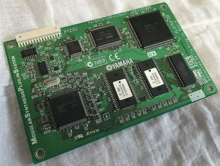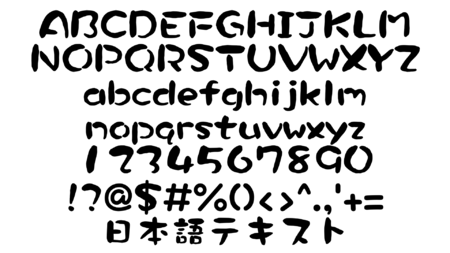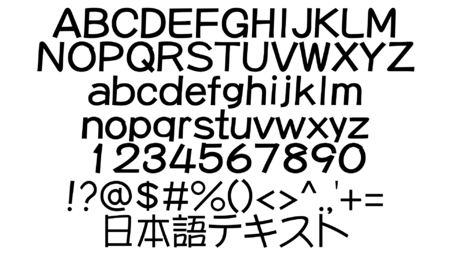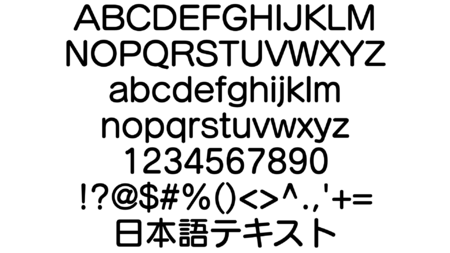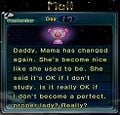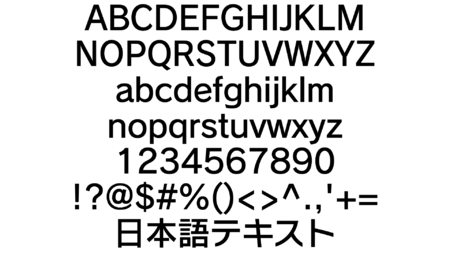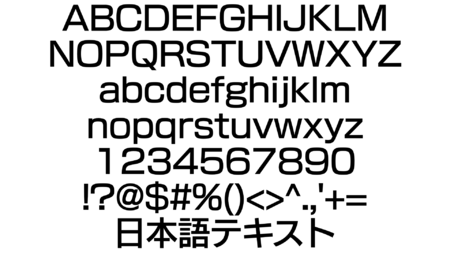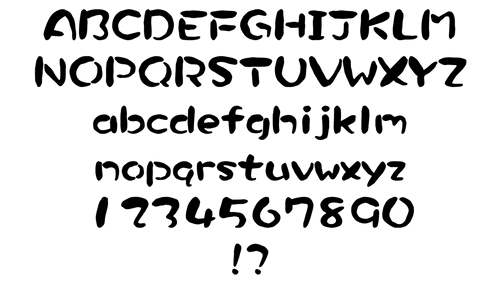Assets used in the Pikmin series: Difference between revisions
mNo edit summary |
(Links and Yamaha S90 added) |
||
| Line 6: | Line 6: | ||
=== ''Sozaijiten'' === | === ''Sozaijiten'' === | ||
[[File:Sozaijiten Vol 6 Cover.jpg|thumb|250px|The cover of ''Sozaijiten | [[File:Sozaijiten Vol 6 Cover.jpg|thumb|250px|The cover of ''Sozaijiten Vol. 6'', one of the CD-ROMs used in the ''Pikmin'' series.]] | ||
''Sozaijiten'' ({{j|素材辞典|Sozai Jiten|Material Dictionary}}) is a series of stock image libraries by Datacraft that is advertised and sold as volumes. The content of each volume is themed (usually around a type of material, part of nature, or event), and were originally distributed on singular CD-ROMs. For | ''Sozaijiten'' ({{j|素材辞典|Sozai Jiten|Material Dictionary}}) is a series of stock image libraries by Datacraft that is advertised and sold as volumes. The content of each volume is themed (usually around a type of material, part of nature, or event), and were originally distributed on singular CD-ROMs. For {{P1}} and {{P2}}, photographs and artwork from ''Sozaijiten'' are used very often and in a myriad of ways. | ||
On [http://www.sozaijiten.com/cdrom/lineup.asp?pt=0 ''Sozaijiten'''s website], low-resolution previews of every image are available for browsing. The previews come with descriptions; these reveal the original shooting location of certain photos, or some miscellaneous information about the photographed material. | On [http://www.sozaijiten.com/cdrom/lineup.asp?pt=0 ''Sozaijiten'''s website], low-resolution previews of every image are available for browsing. The previews come with descriptions; these reveal the original shooting location of certain photos, or some miscellaneous information about the photographed material. | ||
| Line 209: | Line 209: | ||
=== ''Bakku no Oni'' === | === ''Bakku no Oni'' === | ||
[[File:Bakku no Oni SABI 2 Front.png|thumb|250px|An image of ''Bakku no Oni SABI 2''.]] | [[File:Bakku no Oni SABI 2 Front.png|thumb|250px|An image of ''Bakku no Oni SABI 2''.]] | ||
''Bakku no Oni'' ({{j|バックの鬼|Bakku no Oni|Background Demon}}) is a series of stock image libraries that was distributed by A&P CO-ORDINATOR JAPAN. Its volumes were themed after colors or emotions. Images from "Bakku no Oni SABI 2" were often used as textures for the [[caves]] in | ''Bakku no Oni'' ({{j|バックの鬼|Bakku no Oni|Background Demon}}) is a series of stock image libraries that was distributed by A&P CO-ORDINATOR JAPAN. Its volumes were themed after colors or emotions. Images from "Bakku no Oni SABI 2" were often used as textures for the [[caves]] in {{P2}}. | ||
{| class="wikitable mw-collapsible mw-collapsed" | {| class="wikitable mw-collapsible mw-collapsed" | ||
| Line 255: | Line 255: | ||
=== ''VisualDisk'' === | === ''VisualDisk'' === | ||
[[File:VisualDisk M10 Leaves cover.png|thumb|200px|The front cover of ''VisualDisk'' | [[File:VisualDisk M10 Leaves cover.png|thumb|200px|The front cover of ''VisualDisk M-10 Leaves''.]] | ||
''VisualDisk'' is a series of stock image libraries that was distributed by dizáin. Similar in scope to ''Sozaijiten'', there was a very large amount of volumes released and high variety in its content. However, it is used sparsely in | ''VisualDisk'' is a series of stock image libraries that was distributed by dizáin. Similar in scope to ''Sozaijiten'', there was a very large amount of volumes released and high variety in its content. However, it is used sparsely in {{P2}}. | ||
{| class="wikitable mw-collapsible mw-collapsed" | {| class="wikitable mw-collapsible mw-collapsed" | ||
| Line 465: | Line 465: | ||
A lesser-known synthesizer, it is the signature synth of [[Nintendo#Hajime Wakai|Hajime Wakai]], and a staple of the audio design in the ''Pikmin'' series as a whole. It is used in [[Music in Pikmin|''Pikmin'']], [[Music in Pikmin 2|''Pikmin 2'']], [[Music in Pikmin 3|''Pikmin 3'']], [[Music in Pikmin 3#Side Stories|''Pikmin 3 Deluxe'']], and [[Music in Pikmin 4|''Pikmin 4'']]. In some parts of ''Pikmin 3'', Asuka Hayazaki uses this synthesizer. Soshi Abe uses samples from it for ''Pikmin 3 Deluxe'' and ''Pikmin 4''. | A lesser-known synthesizer, it is the signature synth of [[Nintendo#Hajime Wakai|Hajime Wakai]], and a staple of the audio design in the ''Pikmin'' series as a whole. It is used in [[Music in Pikmin|''Pikmin'']], [[Music in Pikmin 2|''Pikmin 2'']], [[Music in Pikmin 3|''Pikmin 3'']], [[Music in Pikmin 3#Side Stories|''Pikmin 3 Deluxe'']], and [[Music in Pikmin 4|''Pikmin 4'']]. In some parts of ''Pikmin 3'', Asuka Hayazaki uses this synthesizer. Soshi Abe uses samples from it for ''Pikmin 3 Deluxe'' and ''Pikmin 4''. | ||
{{listen | |||
|filename=K2500Demo.ogg | |||
|title=K2500 preview | |||
|description=A short demo of sounds from the K2500. | |||
}} | |||
{{clear}} | {{clear}} | ||
| Line 475: | Line 481: | ||
The programs from the K25 FARM are also used very often within the music and sound effects of the ''Pikmin'' games, even {{P3}}. | The programs from the K25 FARM are also used very often within the music and sound effects of the ''Pikmin'' games, even {{P3}}. | ||
{{listen | |||
|filename=K25FarmDemo.ogg | |||
|title=K25 FARM preview | |||
|description=A short demo of some sounds exclusive to the K25 FARM. | |||
}} | |||
{{clear}} | {{clear}} | ||
| Line 489: | Line 501: | ||
|description=A short demo of sounds from the SC-88. | |description=A short demo of sounds from the SC-88. | ||
}} | }} | ||
{{clear}} | |||
===Yamaha S90=== | |||
[[File:Yamaha S90.jpg|thumb|400px|The Yamaha S90.]] | |||
The {{w|Yamaha S90}} is a synthesizer manufactured by Yamaha Corporation in 2002. It has 384 instrument presets and 48 drumset presets (though most of these sounds were lifted from the {{w|Yamaha Motif}}, a synthesizer released one year prior). Its acoustic instruments in particular are much more realistic than the older [[#Kurzweil K2500|Kurzweil K2500R]] and [[#Roland SC-88|Roland SC-88]]. | |||
The Yamaha S90 is commonly used by [[Nintendo#Kazumi Totaka|Kazumi Totaka]]; in the ''Pikmin'' series, it has only been used to score the music of {{P2}}. Comparing that game's release date with that of the synthesizer, ''Pikmin 2'' is very likely to be the time he has used it in his work. | |||
{{clear}} | |||
====Expansion boards==== | |||
[[File:Yamaha PLG150-DX photograph.png|thumb|220px|Image of one of the expansion boards, the PLG150-DX.]] | |||
Many of Yamaha's synthesizers produced around 1998 to 2003 featured support for the "Modular Synthesis Plug-in System". Users could purchase expansion boards that were designed to simply be inserted into a Yamaha synthesizer, instantly adding brand new playable presets, as well as expanding the synth's original capabilities in the process. In total, [https://soundprogramming.net/synthesizers/yamaha/yamaha-plg-expansion-boards/ 12] of these boards were produced. A few of them contain just basic sets of waveforms, while others are fully-fledged synthesizers. The "PLG150-AN" for example is technically an {{w|analog synthesizer}}; when it is plugged into a compatible synthesizer, the new set of playable presets that it adds will uniquely generate their sound with the board's analog synthesis. | |||
Along with his Yamaha S90, Kazumi Totaka uses the PLG-150DX and PLG-150VL expansion boards for some songs for ''Pikmin 2''. The boards use {{w|FM synthesis}} and {{w|physical modelling synthesis}} respectively. | |||
{{clear}} | {{clear}} | ||
| Line 497: | Line 525: | ||
=== ''DFCraftSumi Std W9'' === | === ''DFCraftSumi Std W9'' === | ||
[[File:DFCraftSumi Std W9 fontpreview.png|thumb|right|450px|DFCraftSumi Std W9.]] | [[File:DFCraftSumi Std W9 fontpreview.png|thumb|right|450px|DFCraftSumi Std W9.]] | ||
''DFCraftSumi'' is a typeface created by Dynacomware. ''DFCraftSumi Std W9'' is used in | ''DFCraftSumi'' is a typeface created by Dynacomware. ''DFCraftSumi Std W9'' is used in {{P1}}, {{P2}}, and {{Hp}} for the bubble-like letters that appear in some menus and cutscenes. In {{P3}}, a [[#Pikmin 3 bubble-like font|modified version]] of this font is used. | ||
<gallery> | <gallery> | ||
Pikmin save games.jpg|The | Pikmin save games.jpg|The [[Saved game selection menu#Pikmin 2|Saved game selection menu]] in ''Pikmin''. | ||
Pikmin Onion menu.jpg|The Onion menu in ''Pikmin''. | Pikmin Onion menu.jpg|The [[Onion menu]] in ''Pikmin''. | ||
Pikmin 2 title screen.jpg|Title screen for ''Pikmin 2''. | Pikmin 2 title screen.jpg|[[Title screen#Pikmin 2|Title screen]] for ''Pikmin 2''. | ||
Pikmin 2 sunset screen 3.jpg|One of the day results menu screens in ''Pikmin 2''. | Pikmin 2 sunset screen 3.jpg|One of the [[Day results menu#Pikmin 2|day results menu]] screens in ''Pikmin 2''. | ||
</gallery> | </gallery> | ||
{{clear}} | {{clear}} | ||
| Line 508: | Line 536: | ||
=== ''DFPOP1 Std W3'' === | === ''DFPOP1 Std W3'' === | ||
[[File:DFPOP1 Std W3 fontpreview.png|thumb|right|450px|DFPOP1 Std W3.]] | [[File:DFPOP1 Std W3 fontpreview.png|thumb|right|450px|DFPOP1 Std W3.]] | ||
''DFPOP1'' is a typeface created by Dynacomware. ''DFPOP1 Std W3'' is used as the main text font in | ''DFPOP1'' is a typeface created by Dynacomware. ''DFPOP1 Std W3'' is used as the main text font in {{P1}}, such as for [[Olimar's monologs]]. | ||
<gallery> | <gallery> | ||
Pikmin title screen.jpg| | Pikmin title screen.jpg|[[Title screen#Pikmin|Title screen]] of ''Pikmin''. | ||
Bulbie.jpg|One of Olimar's voyage logs in ''Pikmin''. | Bulbie.jpg|One of [[Olimar's voyage log|Olimar's voyage logs]] in ''Pikmin''. | ||
-1 Ionium Jet 1.jpg|One of Olimar's monologs in ''Pikmin''. | -1 Ionium Jet 1.jpg|One of [[Olimar's monologs]] in ''Pikmin''. | ||
Pikmin high scores.jpg|The high scores menu in ''Pikmin''. | Pikmin high scores.jpg|The high scores menu in ''Pikmin''. | ||
Reel1 Armored Cannon Beetle.png|The enemy reel in ''Pikmin''. | Reel1 Armored Cannon Beetle.png|The [[enemy reel]] in ''Pikmin''. | ||
Pikmin Challenge Mode screen.jpg|The Challenge Mode menu in ''Pikmin''. | Pikmin Challenge Mode screen.jpg|The [[Challenge Mode menu]] in ''Pikmin''. | ||
</gallery> | </gallery> | ||
{{clear}} | {{clear}} | ||
| Line 521: | Line 549: | ||
=== ''Seurat Pro DB'' === | === ''Seurat Pro DB'' === | ||
[[File:Seurat Pro DB fontpreview.png|thumb|right|450px|Seurat Pro DB.]] | [[File:Seurat Pro DB fontpreview.png|thumb|right|450px|Seurat Pro DB.]] | ||
''Seurat'' is a typeface created by Fontworks. ''Seurat Pro DB'' is used as the main text font in | ''Seurat'' is a typeface created by Fontworks. ''Seurat Pro DB'' is used as the main text font in {{P2}}, as seen in the [[ship's dialogs]] and other various menu elements. | ||
<gallery> | <gallery> | ||
Daughter mail.jpg|The mail | Daughter mail.jpg|The mail at the [[Day results menu#Pikmin 2|day results menu]] in ''Pikmin 2''. | ||
Pikmin 2 options.jpg|The options menu in ''Pikmin 2''. | Pikmin 2 options.jpg|The [[Options menu#Pikmin 2|options menu]] in ''Pikmin 2''. | ||
Ancient Secrets Series.jpg|A dialog box in the Treasure Hoard. | Ancient Secrets Series.jpg|A dialog box in the [[Treasure Hoard]]. | ||
2PRules1.png| | 2PRules1.png|The rules being explained in the [[2-Player Battle menu]]. | ||
</gallery> | </gallery> | ||
{{clear}} | {{clear}} | ||
| Line 532: | Line 560: | ||
=== ''Rodin NTLG Pro DB'' === | === ''Rodin NTLG Pro DB'' === | ||
[[File:Rodin NTLG Pro DB fontpreview.png|thumb|right|450px|Rodin NTLG Pro DB.]] | [[File:Rodin NTLG Pro DB fontpreview.png|thumb|right|450px|Rodin NTLG Pro DB.]] | ||
''Rodin NTLG'' is a typeface created by Fontworks. ''Rodin NTLG Pro DB'' is used as the main text font in | ''Rodin NTLG'' is a typeface created by Fontworks. ''Rodin NTLG Pro DB'' is used as the main text font in {{P3}} and {{P3d}}, such as the English text displayed on the [[KopPad]], on-screen character dialog, and other various menu elements. | ||
<gallery> | <gallery> | ||
P3D Menu Side Stories Comeback.jpg| | P3D Menu Side Stories Comeback.jpg|The [[Side Stories menu]] in ''Pikmin 3 Deluxe''. | ||
KopPad Exploration Notes P3.jpg|The KopPad's | KopPad Exploration Notes P3.jpg|The KopPad's [[KopPad#Exploration Notes|Exploration Notes]] menu. | ||
UsingTheRadar1DataFile.jpg|A data file obtained in ''Pikmin 3''. | UsingTheRadar1DataFile.jpg|A [[data file]] obtained in ''Pikmin 3''. | ||
HUD KopPad button P3D.jpg|A HUD element in ''Pikmin 3''. | HUD KopPad button P3D.jpg|A [[HUD]] element in ''Pikmin 3''. | ||
</gallery> | </gallery> | ||
{{clear}} | {{clear}} | ||
| Line 543: | Line 571: | ||
=== ''New Rodin Pro DB'' === | === ''New Rodin Pro DB'' === | ||
[[File:New Rodin Pro DB fontpreview.png|thumb|right|450px|New Rodin Pro DB.]] | [[File:New Rodin Pro DB fontpreview.png|thumb|right|450px|New Rodin Pro DB.]] | ||
''New Rodin'' is a typeface created by Fontworks. ''New Rodin Pro DB'' is used in | ''New Rodin'' is a typeface created by Fontworks. ''New Rodin Pro DB'' is used in {{P3}} and {{P3d}}, for the numbers in the countdown at sunset. | ||
{{clear}} | {{clear}} | ||
== Proprietary fonts == | == Proprietary fonts == | ||
Some text that appears in the games use fonts that are uniquely created for the ''Pikmin'' series itself. | Some text that appears in the games use fonts that are uniquely created for the [[Pikmin series|''Pikmin'' series]] itself. | ||
=== ''Pikmin 3'' bubble-like font === | === ''Pikmin 3'' bubble-like font === | ||
An updated variant of ''DFCraftSumi Std W9'' is used in | An updated variant of ''DFCraftSumi Std W9'' is used in {{P3}}. It highly resembles the original typeface, but many minor changes have been made to improve readability, such as making the tails of certain characters longer and their widths more consistent. | ||
[[File:DFCraftSumi font comparison.gif|thumb|left|500px|A comparison between DFCraftSumi Std W9, and its smoother look-alike in ''Pikmin 3''.]] | [[File:DFCraftSumi font comparison.gif|thumb|left|500px|A comparison between DFCraftSumi Std W9, and its smoother look-alike in ''Pikmin 3''.]] | ||
| Line 568: | Line 596: | ||
==Trivia== | ==Trivia== | ||
*The [[#Kurzweil K2500|Kurzweil K2500R]] and [[#Roland SC-88|Roland SC-88]] alone make up over 90% of the soundtrack for {{P1}}, and over 55% of the soundtrack for {{P2}}.{{cite web |https://docs.google.com/spreadsheets/d/1s5wRceP34gaPr-CkNSnnlaCSEID5HjWTX4TSR_OxeqA/| | *The [[#Kurzweil K2500|Kurzweil K2500R]] and [[#Roland SC-88|Roland SC-88]] alone make up over 90% of the soundtrack for {{P1}}, and over 55% of the soundtrack for {{P2}}.{{cite web |https://docs.google.com/spreadsheets/d/1s5wRceP34gaPr-CkNSnnlaCSEID5HjWTX4TSR_OxeqA/|Detailed spreadsheet that documents sound sources used in the series, maintained by fans|Google Sheets}} | ||
== References == | == References == | ||
Revision as of 05:12, August 5, 2023
The Pikmin series and its world is built with distinct pieces of imagery, audio, and typefaces. A large portion of the assets used in the games are made from scratch and are proprietary to Nintendo, though occasionally, some of these assets may be taken or contain elements from external sources. This can include commercially-available software libraries, or real-life objects and hardware.
Stock photography
Since the objects and environments within the Pikmin series are often based on human technology and nature in the real world, photography of real items and locations on Earth are a common resource for textures. For the first game, a large amount of these images were taken in Japan by members of the game's own staff.[1] However, it was not uncommon for some few pieces of foliage to be made using graphics from stock photography libraries. For more unnatural materials, this occurred a lot more often. During the development of Pikmin and Pikmin 2, these libraries were primarily sold and distributed on CD-ROMs.
Sozaijiten
Sozaijiten (素材辞典?, lit.: "Material Dictionary") is a series of stock image libraries by Datacraft that is advertised and sold as volumes. The content of each volume is themed (usually around a type of material, part of nature, or event), and were originally distributed on singular CD-ROMs. For Pikmin and Pikmin 2, photographs and artwork from Sozaijiten are used very often and in a myriad of ways.
On Sozaijiten's website, low-resolution previews of every image are available for browsing. The previews come with descriptions; these reveal the original shooting location of certain photos, or some miscellaneous information about the photographed material.
| List of Sozaijiten textures used in Pikmin | |||||
|---|---|---|---|---|---|
| Volume | Name | Source Image | Texture/Screenshot | Description | |
| Vol. 6 四季・自然編
(Seasons and Nature) |
SF085 | 
|

|
The background to a piece of promotional artwork for Pikmin. It is an image of some horsetails, taken in Atsuta, Hokkaido. | |
| Vol. 6 四季・自然編
(Seasons and Nature) |
SF097 | 
|
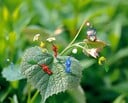
|
The background to a piece of promotional artwork for Pikmin. | |
| Vol. 6 四季・自然編
(Seasons and Nature) |
SF122 | File:Pikmin The Final Trial Island Base.png | 
|
The mountains in the area selection menu. It is a photograph of Mount Kamui and Lake Mashū. | |
| Vol. 6 四季・自然編
(Seasons and Nature) |
SF164 | File:Pikmin World Map Base.png | 
|
The main landmass in the area selection menu. It was taken in Shakotan, Hokkaido. | |
| Vol. 13 葉・葉脈編
(Leaves and Leaf Veins) |
SM054 | 
|
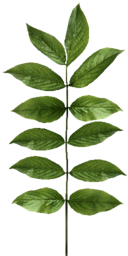
|
Several plants found in the The Impact Site. It is a photograph of an elderberry's leaves. | |
| Vol. 16 皮・年輪編
(Wood Textures) |
SQ166 | 
|
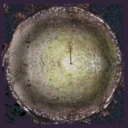
|
The base of several wooden stumps in The Distant Spring. | |
| Vol. 21 宇宙・惑星編
(Space and Planets) |
SV001 | 
|
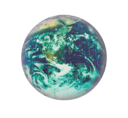
|
PNF-404, in the Nintendo Player's Guide of Pikmin. It is a photograph of Earth. It is also used for Koppai in the opening of Pikmin 3. | |
| Vol. 21 宇宙・惑星編
(Space and Planets) |
SV002 | 
|
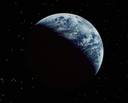
|
PNF-404, during the credits of Pikmin. It is a photograph of Earth. | |
| Vol. 21 宇宙・惑星編
(Space and Planets) |
SV007 | 
|

|
PNF-404, during the good ending cutscene of Pikmin. It is a photograph of Earth. | |
| List of Sozaijiten textures used in Pikmin 2 | |||||
|---|---|---|---|---|---|
| Volume | Name | Source Image | Texture/Screenshot | Description | |
| Vol. 1 テクスチャー・石編
(Stone Textures) |
SA068 | 
|
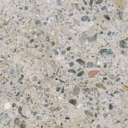
|
Stone used around the geyser in the 2nd sublevel of the Emergence Cave. | |
| Vol. 2 紙・布・木編
(Paper, Cloth, and Wood Textures) |
SB108 | 
|
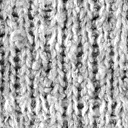
|
The fabric for the Five-man Napsack. | |
| Vol. 5 空・雲編
(Sky and Clouds) |
SE074 | 
|
The fog in the area selection menu of Pikmin 2. | ||
| Vol. 6 四季・自然編
(Seasons and Nature) |
SF122 | File:Pikmin The Final Trial Island Base.png | 
|
The mountains in the area selection menu. It is a photograph of Mount Kamui and Lake Mashū. | |
| Vol. 6 四季・自然編
(Seasons and Nature) |
SF164 | File:Pikmin World Map Base.png | 
|
The main landmass in the area selection menu. It was taken in Shakotan, Hokkaido. | |
| Vol. 6 四季・自然編
(Seasons and Nature) |
SF190 | 
|

|
Snow used for the Valley of Repose's background image. The image was taken on a beach in Otaru. | |
| Vol. 6 四季・自然編
(Seasons and Nature) |
SF191 | 
|

|
Trees used for the Valley of Repose's background image. The image was taken in Shikaoi, Hokkaido. | |
| Vol. 8 壁・土編
(Walls and Soils) |
SH071 | 
|

|
Used for the build cave background. It has been flipped horizontally.
| |
| Vol. 8 壁・土編
(Walls and Soils) |
SH096 | 
|
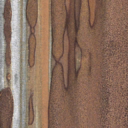
|
Several metallic sheets buried in the ground that appear in the Perplexing Pool. | |
| Vol. 13 葉・葉脈編
(Leaves and Leaf Veins) |
SM074 | 
|
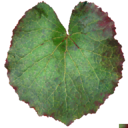
|
Large leaves in the Perplexing Pool. It is a photograph of Galax. | |
| Vol. 16 皮・年輪編
(Wood Textures) |
SQ166 | 
|

|
The base of several wooden stumps in the Perplexing Pool and a unique cave unit seen in the Hole of Heroes. | |
| Vol. 21 宇宙・惑星編
(Space and Planets) |
SV161 | 
|

|
A galaxy that can be seen in the Debt Repayment Cinema in Pikmin 2. It is a photograph of a spiral galaxy in the Pegasus constellation. | |
| Vol. 21 宇宙・惑星編
(Space and Planets) |
SV186 | 
|

|
Nebulae that can be seen in the Opening and Debt Repayment Cinemas in Pikmin 2. It is a photograph of the Orion Nebula. | |
| Vol. 21 宇宙・惑星編
(Space and Planets) |
SV187 | 
|

|
Nebulae that can be seen in the Opening and Debt Repayment Cinemas in Pikmin 2. It is a photograph of the Orion Nebula. | |
| Vol. 24 大理石編
(Marbles) |
SY089 | 
|

|
The texture for the Priceless Statue and Worthless Statue. It is an image of Grigio Carnico marble. | |
| Vol. 53 木目・組木・あじろ編
(Grain, Interlocked and Braided Wood) |
CD123 | 
|

|
The texture used for the Shock Therapist's wooden base. It is an image of rosewood. | |
| Vol. 53 木目・組木・あじろ編
(Grain, Interlocked and Braided Wood) |
CD138 | 
|

|
Used for the flooring cave background. It is an image of 5-inch white oak flooring. Several planks of wood were stretched.
| |
Bakku no Oni
Bakku no Oni (バックの鬼?, lit.: "Background Demon") is a series of stock image libraries that was distributed by A&P CO-ORDINATOR JAPAN. Its volumes were themed after colors or emotions. Images from "Bakku no Oni SABI 2" were often used as textures for the caves in Pikmin 2.
| List of Bakku no Oni textures used in Pikmin 2 | |||||
|---|---|---|---|---|---|
| Volume | Name | Source Image | Texture/Screenshot | Description | |
| 寂2
(SABI 2) |
RUST-08 | 
|

|
Used for a small metal plate in the center of the room_hitode3x3_5_metal cave unit.
| |
| 寂2
(SABI 2) |
RUST-27 | 
|
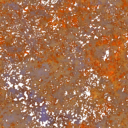
|
Used for the dark brown metal in many metallic cave units, and the top of the bucket in the room_big_kusachi garden cave unit.
| |
| 寂2
(SABI 2) |
RUST-34 | 
|
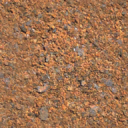
|
Used as the center room's floor in room_white14x12_metal, the main cave unit in sublevel 3 of the White Flower Garden.
| |
| 寂2
(SABI 2) |
RUST-36 | 
|
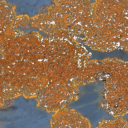
|
The blue rusted metal used in many metallic cave units. | |
| 寂2
(SABI 2) |
RUST-41 | 
|
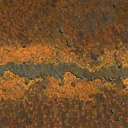
|
Used in the small path in room_white14x12_metal, and as the circular rim in the Titan Dweevil's arena, room_oootakara_tile.
| |
VisualDisk
VisualDisk is a series of stock image libraries that was distributed by dizáin. Similar in scope to Sozaijiten, there was a very large amount of volumes released and high variety in its content. However, it is used sparsely in Pikmin 2.
| List of VisualDisk textures used in Pikmin 2 | |||||
|---|---|---|---|---|---|
| Volume | Name | Source Image | Texture/Screenshot | Description | |
| M-02 Metals | M2_01 | 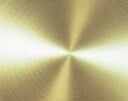
|
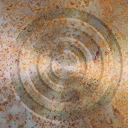
|
Used for the top of the bucket in the room_big_kusachi garden cave unit. It is mixed with "RUST-27" from Bakku no Oni SABI 2.
| |
| M-10 Leaves | M10_05 | 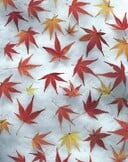
|
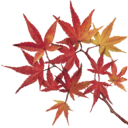
|
Used for various autumn leaves on Pikmin 2's title screen, and in the intro for the Wistful Wild when landing in the area for the first time. | |
| M-10 Leaves | M10_43 | 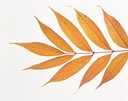
|
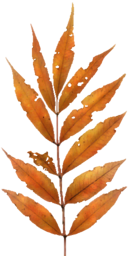
|
Used for several plants in the Wistful Wild. The leaves have been edited to look like they are decaying. | |
Audio
Similar to graphics, creating game audio often involves the sampling of various sound libraries. The games within the Pikmin series are a good example, where a large amount of audio can be sourced back to a number of different commercially-released products. These products are used to create the individual instrument samples and sound effects in the games, as well as pieces of streamed music. All of the music in Pikmin, Pikmin 2, and Pikmin 3 use audio from digital instruments and synthesizers; instances of musicians performing live on real acoustic instruments are highly uncommon in the games. The new music composed by Babi for Pikmin 3 Deluxe is one of the very few occasions where this was done.[2]
Since there is a history of many different composers and sound effect programmers contributing to the games, there is a large variety of synthesizers and sample libraries that have been used. Listed below are all of these currently known products.
| List of products used for music | ||||||||
|---|---|---|---|---|---|---|---|---|
| Product | Image | Year | Format | |||||
| Roland SC-88 |  |
1994 | Hardware synthesizer | Used | Used | Used | Absent | Absent |
| Kurzweil K2500R | 1996 | Hardware synthesizer | Used | Used | Used | Used | Absent | |
| KORG TRITON STUDIO | 1999 | Hardware synthesizer | Absent | Absent | Used | Absent | Absent | |
| Yamaha S90 | 2002 | Hardware synthesizer | Absent | Used | Absent | Absent | Absent | |
| Yamaha PLG150-DX |  |
1999 | Plug-in board | Absent | Used | Absent | Absent | Absent |
| Yamaha PLG150-VL |  |
1999 | Plug-in board | Absent | Used | Absent | Absent | Absent |
| InVision Lightware 1 |  |
1989 | AKAI CD-ROM | Absent | Used | Absent | Absent | Absent |
| Drums + Percussion Special Edit. |  |
1992 | AKAI CD-ROM | Absent | Used | Absent | Absent | Absent |
| Orchestral Colours |  |
1993 | AKAI CD-ROM | Absent | Used | Absent | Absent | Absent |
| ZERO-G Ambient Volume 2 |  |
1993 | AKAI CD-ROM | Absent | Used | Absent | Absent | Absent |
| ILIO Synclavier Sampler Library | File:ILIO Synclavier Sampler Library Percussion World and Orchestral.jpeg | 1994 | AKAI CD-ROM | Absent | Used | Absent | Absent | Absent |
| Advanced Orchestra |  |
1997 | AKAI CD-ROM | Absent | Used | Used | Used | Absent |
| SampleCell II CD-ROM Library |  |
1991 | SampleCell CD-ROM | Used | Used | Absent | Absent | Absent |
| Ultra Gigapack |  |
1995 | SampleCell CD-ROM | Used | Used | Absent | Absent | Absent |
| Now CD-ROM |  |
1994 | CD-ROM | Absent | Absent | Absent | Absent | Used |
| Bass Legends |  |
1994 | CD-ROM | Absent | Used | Absent | Absent | Absent |
| Supreme Beats |  |
1995 | CD-ROM | Used | Used | Used | Absent | Absent |
| Series 4000 Sound FX |  |
1989 | Audio CD-ROM | Absent | Used | Used | Absent | Absent |
| Series 6000 Sound FX |  |
1992 | Audio CD-ROM | Absent | Used | Used | Absent | Absent |
| Warner Bros. Sound FX |  |
1992 | Audio CD-ROM | Absent | Used | Absent | Absent | Absent |
| Animal Trax |  |
1996 | Audio CD-ROM | Absent | Absent | Used | Absent | Absent |
| ZERO-G Ethnic Flavours |  |
1996 | Audio CD-ROM | Absent | Absent | Used | Absent | Absent |
| Voices of Istanbul |  |
2000 | Audio CD-ROM | Absent | Used | Absent | Absent | Absent |
| Symphonic Orchestra |  |
2003 | Software instrument | Absent | Absent | Used | Used | Absent |
| Ra |  |
2005 | Software instrument | Absent | Absent | Used | Absent | Absent |
| HALion One | 2006 | Software instrument | Absent | Absent | Used | Absent | Absent | |
| Stormdrum 2 |  |
2007 | Software instrument | Absent | Absent | Used | Absent | Absent |
| Vienna Special Edition Volume 1 |  |
2007 | Software instrument | Absent | Absent | Absent | Absent | Used |
| Heavyocity Evolve | 2008 | Software instrument | Absent | Absent | Absent | Used | Absent | |
| Omnisphere |  |
2008 | Software instrument | Absent | Absent | Used | Absent | Used |
| Discovery Series: West Africa |  |
2010 | Software instrument | Absent | Absent | Absent | Absent | Used |
| Ethno World 5 |  |
2010 | Software instrument | Absent | Absent | Absent | Absent | Used |
| KONTAKT Factory Library |  |
2010 | Software instrument | Absent | Absent | Used | Absent | Absent |
| Stylus RMX |  |
2010 | Software instrument | Absent | Absent | Absent | Absent | Used |
| Heavyocity Damage |  |
2011 | Software instrument | Absent | Absent | Absent | Absent | Used |
| Soniccouture Music Boxes |  |
2011 | Software instrument | Absent | Absent | Absent | Used | Absent |
| Logic Pro X |  |
2004 | DAW | Absent | Absent | Used | Absent | Absent |
A more detailed list that includes the specific songs these products are used in can be viewed here.
Kurzweil K2500
The Kurzweil K2500 is a synthesizer manufactured by Kurzweil Music Systems in 1996. The Kurzweil K2500R is its rackmount variant, and the specific model that was owned and used by Hajime Wakai. Typically, rackmount versions of synthesizers are identical in functionality, but they lack a physical keyboard. This makes them more compact and easy to cram into a studio space; however, it is intended that they be connected to an external MIDI device, such as a musical keyboard, a computer, or some other MIDI-compatible instrument in order to use them.
A lesser-known synthesizer, it is the signature synth of Hajime Wakai, and a staple of the audio design in the Pikmin series as a whole. It is used in Pikmin, Pikmin 2, Pikmin 3, Pikmin 3 Deluxe, and Pikmin 4. In some parts of Pikmin 3, Asuka Hayazaki uses this synthesizer. Soshi Abe uses samples from it for Pikmin 3 Deluxe and Pikmin 4.
K25 FARM
By default, the Kurzweil K2500 comes with 200 instrument presets (also known as programs), but this amount is easily expandable. Users can create their own custom programs using various waveforms built into its synth engine, or load in programs from an external source using the synthesizer's floppy drive or SCSI connection.
The purchase of a new K2500 included several floppy disks, one of which contained the "K25 FARM". On it, is a collection of several hundred brand new, unique programs for the K2500. Users can load these presets by simply inserting the disk into the K2500's floppy drive. If the floppy disk is lost or damaged, the files are still available to download for free from Kurzweil's website; keep in mind, these presets are not playable without their compatible synthesizer.
The programs from the K25 FARM are also used very often within the music and sound effects of the Pikmin games, even Pikmin 3.
Roland SC-88
The Roland SC-88 is a General MIDI-based synthesizer, manufactured by Roland in 1994. An entry in the Roland Sound Canvas series, it has 654 default instrument presets and 22 drumset presets that are designed to perfectly conform to the General MIDI standard, making it excellent for the playback of MIDI songs. It is still useful as a compositional tool; the sounds from the Roland Sound Canvas line of synthesizers are very common in video games. Compressed samples of audio from a SC-55 are even utilized for the Microsoft GS Wavetable Synth, the default "soundfont" for MIDI playback on most computers.[3]
It is used primarily in the music of Pikmin and Pikmin 2, by Hajime Wakai. Alongside the Kurzweil K2500, these two synthesizers make up the vast majority of instrument samples in those games.
Yamaha S90
The Yamaha S90 is a synthesizer manufactured by Yamaha Corporation in 2002. It has 384 instrument presets and 48 drumset presets (though most of these sounds were lifted from the Yamaha Motif, a synthesizer released one year prior). Its acoustic instruments in particular are much more realistic than the older Kurzweil K2500R and Roland SC-88.
The Yamaha S90 is commonly used by Kazumi Totaka; in the Pikmin series, it has only been used to score the music of Pikmin 2. Comparing that game's release date with that of the synthesizer, Pikmin 2 is very likely to be the time he has used it in his work.
Expansion boards
Many of Yamaha's synthesizers produced around 1998 to 2003 featured support for the "Modular Synthesis Plug-in System". Users could purchase expansion boards that were designed to simply be inserted into a Yamaha synthesizer, instantly adding brand new playable presets, as well as expanding the synth's original capabilities in the process. In total, 12 of these boards were produced. A few of them contain just basic sets of waveforms, while others are fully-fledged synthesizers. The "PLG150-AN" for example is technically an analog synthesizer; when it is plugged into a compatible synthesizer, the new set of playable presets that it adds will uniquely generate their sound with the board's analog synthesis.
Along with his Yamaha S90, Kazumi Totaka uses the PLG-150DX and PLG-150VL expansion boards for some songs for Pikmin 2. The boards use FM synthesis and physical modelling synthesis respectively.
Fonts
Most of the fonts used in the Pikmin games are commercially-available fonts created by Dynacomware or Fontworks. Originally, they were sold bundled together with many other typefaces and distributed on CD-ROMs, but the individual fonts are still available online. Because of their availability, usage of these fonts in other media may be mistaken as a reference to the Pikmin series.
DFCraftSumi Std W9
DFCraftSumi is a typeface created by Dynacomware. DFCraftSumi Std W9 is used in Pikmin, Pikmin 2, and Hey! Pikmin for the bubble-like letters that appear in some menus and cutscenes. In Pikmin 3, a modified version of this font is used.
The Saved game selection menu in Pikmin.
The Onion menu in Pikmin.
Title screen for Pikmin 2.
One of the day results menu screens in Pikmin 2.
DFPOP1 Std W3
DFPOP1 is a typeface created by Dynacomware. DFPOP1 Std W3 is used as the main text font in Pikmin, such as for Olimar's monologs.
Title screen of Pikmin.
One of Olimar's voyage logs in Pikmin.
One of Olimar's monologs in Pikmin.
The enemy reel in Pikmin.
The Challenge Mode menu in Pikmin.
Seurat Pro DB
Seurat is a typeface created by Fontworks. Seurat Pro DB is used as the main text font in Pikmin 2, as seen in the ship's dialogs and other various menu elements.
The mail at the day results menu in Pikmin 2.
The options menu in Pikmin 2.
A dialog box in the Treasure Hoard.
The rules being explained in the 2-Player Battle menu.
Rodin NTLG Pro DB
Rodin NTLG is a typeface created by Fontworks. Rodin NTLG Pro DB is used as the main text font in Pikmin 3 and Pikmin 3 Deluxe, such as the English text displayed on the KopPad, on-screen character dialog, and other various menu elements.
The Side Stories menu in Pikmin 3 Deluxe.
The KopPad's Exploration Notes menu.
A data file obtained in Pikmin 3.
A HUD element in Pikmin 3.
New Rodin Pro DB
New Rodin is a typeface created by Fontworks. New Rodin Pro DB is used in Pikmin 3 and Pikmin 3 Deluxe, for the numbers in the countdown at sunset.
Proprietary fonts
Some text that appears in the games use fonts that are uniquely created for the Pikmin series itself.
Pikmin 3 bubble-like font
An updated variant of DFCraftSumi Std W9 is used in Pikmin 3. It highly resembles the original typeface, but many minor changes have been made to improve readability, such as making the tails of certain characters longer and their widths more consistent.
Hocotate Freight text
The logo for Hocotate Freight uses a uniquely designed font. It is alien-like, but still legible English.
Koppaite text
- Main article: Koppaite text.
In Pikmin 3 and Pikmin 4, an in-universe written language appears very frequently on technology and as a background element throughout various in-game menus. The text appears as an assortment of illegible alien symbols, but these characters are actually translatable into the 26 letters in the English alphabet, which reveal some small secrets when various instances of the text are deciphered.
Trivia
- The Kurzweil K2500R and Roland SC-88 alone make up over 90% of the soundtrack for Pikmin, and over 55% of the soundtrack for Pikmin 2.[4]
References
- ^ YouTube video of footage from E3, where it is stated that some of the materials used in Pikmin are from around Shigeru Miyamoto's neighborhood (at 10:10)
- ^ Babi's response to an e-mail inquiry on Pikipedia
- ^ YouTube video of a live comparison between the SC-55 (via the virtual SCVA plugin) and the Microsoft GS Wavetable Synth
- ^ Detailed spreadsheet that documents sound sources used in the series, maintained by fans on Google Sheets
